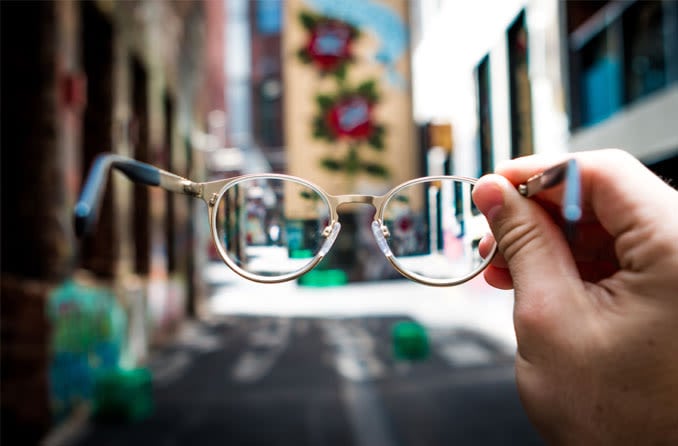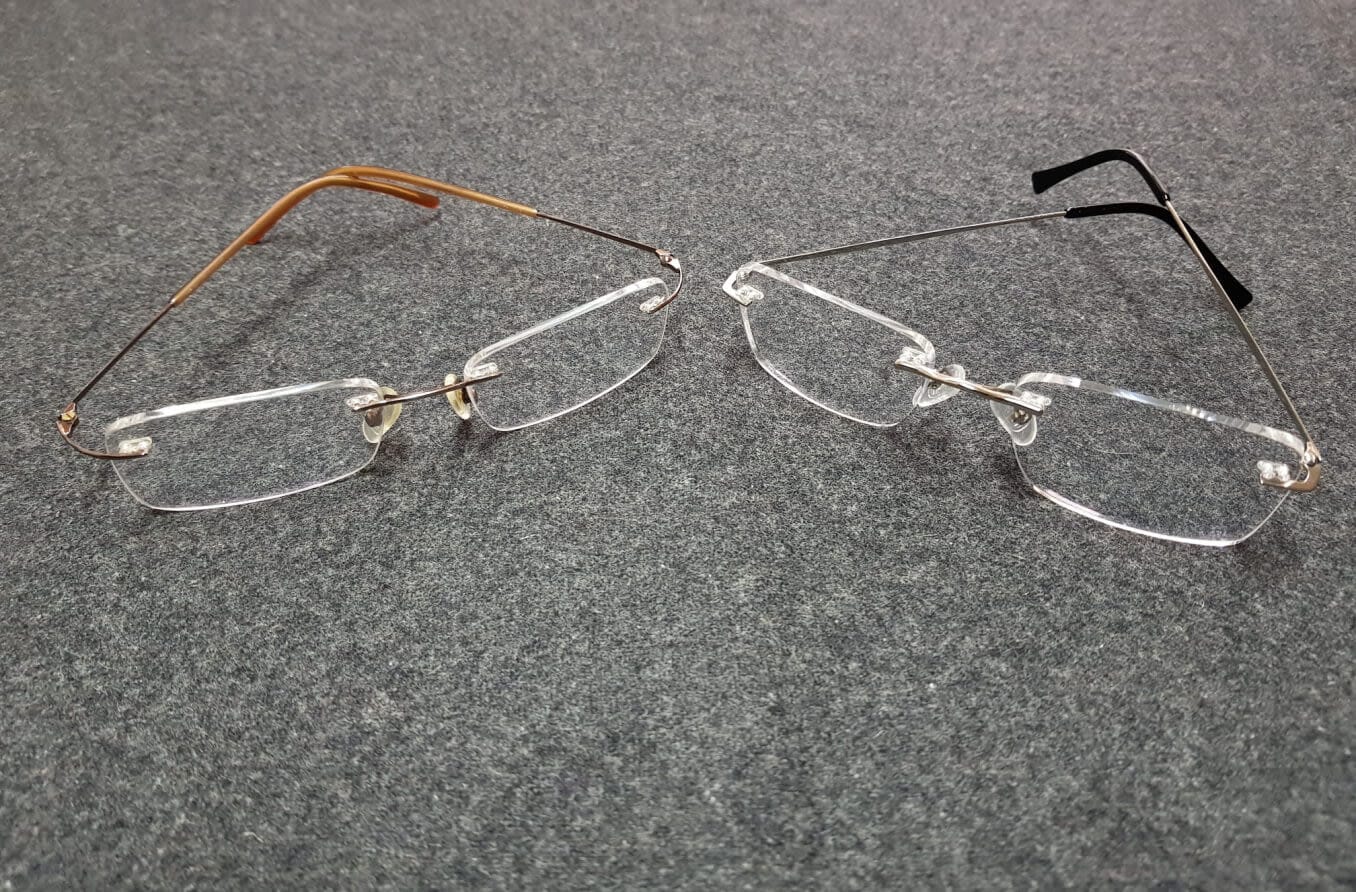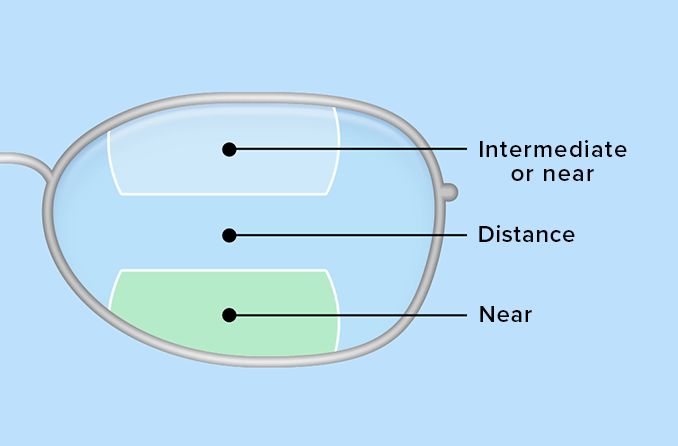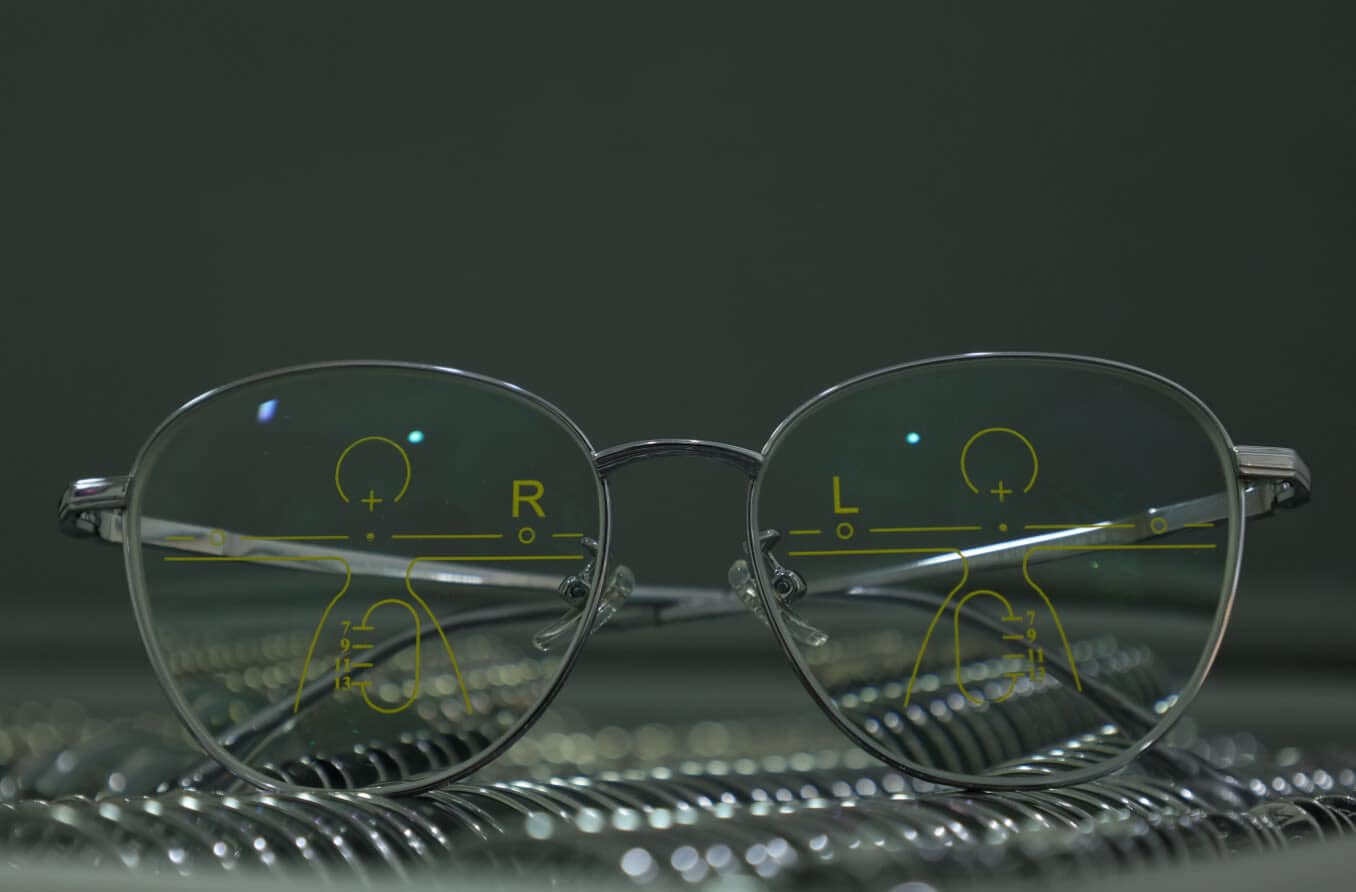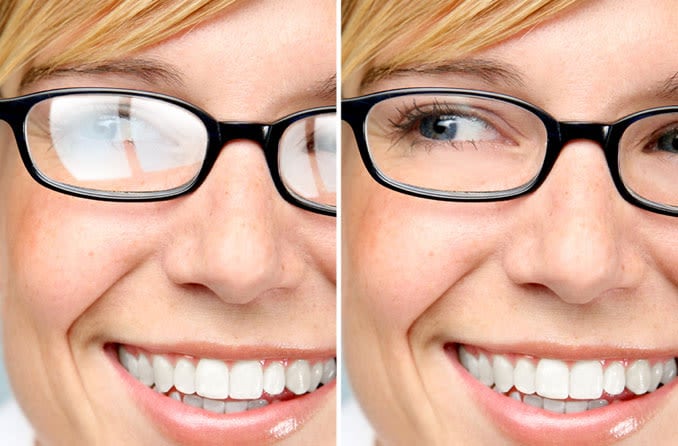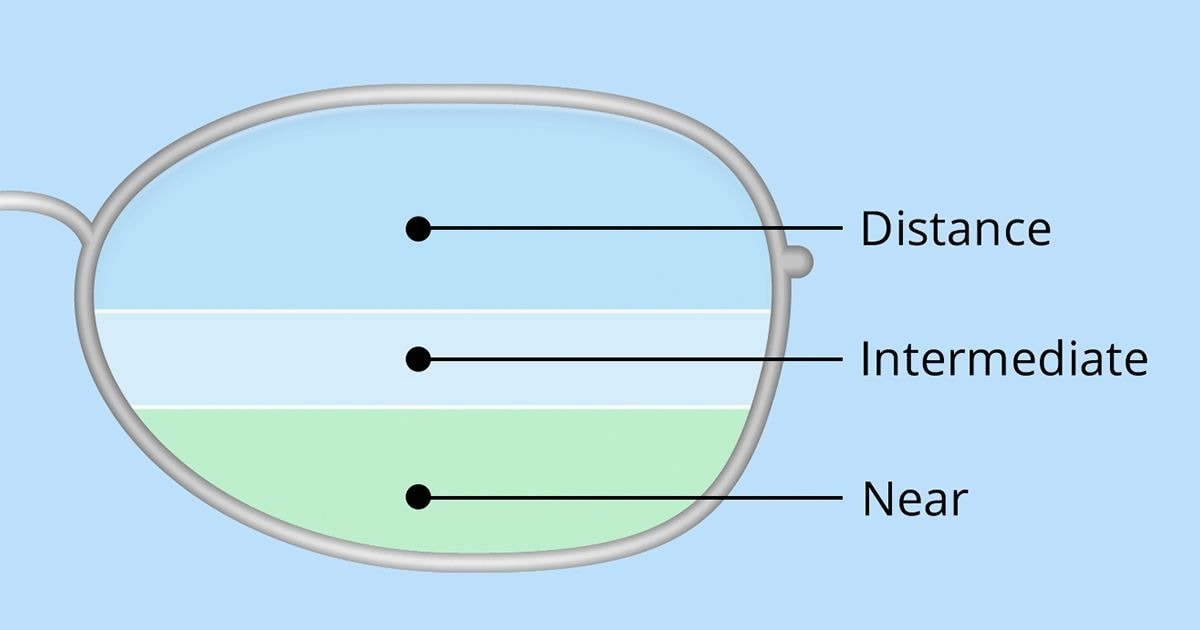Here are details about important features of lenses for your glasses:
Index of refraction
The index of refraction (or refractive index) of an eyeglass lens material is an indicator of how efficiently the material refracts (bends) light. This efficiency is related to how fast light travels through the material.
Specifically, the refractive index of a lens material is the ratio of the speed of light in a vacuum, divided by the speed of light in the lens material. For example, the index of refraction of CR-39 plastic is 1.498. This means light travels roughly 50% slower through CR-39 plastic than it does through a vacuum.
The higher the refractive index of a material, the slower light moves through it, which results in greater bending (or focusing) of the light rays. So, the higher the refractive index of a lens material, the less lens material is required to bend light to the same degree as a lens with a lower refractive index.
In other words, for a given eyeglass lens power, a lens made of a material with a high refractive index will be thinner than a lens made of a material with a lower refractive index.
The refractive index of the most popular eyeglass lens materials used today ranges from 1.498 (CR-39 plastic) to 1.74 (a type of high-index plastic). For the same prescription power and lens design, a lens made of CR-39 plastic will be the thickest and a 1.74 high-index plastic lens will be the thinnest.
Abbe value
The Abbe value of a lens material determines how much chromatic aberration the lens produces. This is an optical error that causes colored halos around lights.
Lens materials with a low Abbe value can cause noticeable and bothersome chromatic aberration.
Chromatic aberration is most noticeable when looking through the periphery of eyeglass lenses. It is least noticeable when looking directly through the central optical zone of the lenses.
Abbe values of eyeglass lens materials range from a high of 59 (regular glass) to a low of 30 (polycarbonate). The lower the Abbe number, the more likely the lens material is to cause chromatic aberration.
Abbe number is named after the German physicist Ernst Abbe (1840-1905), who defined this useful measure of optical quality.
SEE ALSO: How To Clean Glasses — Without Scratching Your Lenses!
Aspheric design
Glasses lenses with an aspheric design have a slimmer, more attractive profile than regular lenses.
In aspheric lenses, the curvature of the lens changes gradually from its center to its edge. This enables the use flatter curves when fabricating eyeglass lenses.
Because aspheric lenses are flatter than regular lenses, they cause less unwanted magnification. This makes the wearer's eyes look more natural in size and appearance. In some cases, aspheric lens designs also improve the wearer's peripheral vision.
Most high-index plastic lenses are aspheric to optimize both appearance and optical performance. With polycarbonate and CR-39 lenses, an aspheric design is optional and available for an added cost.
Center and edge thickness
In the United States, the U.S. Food and Drug Administration (FDA) has issued guidelines for impact resistance of eyeglass lenses. For this reason, there's a limit to how thin an optical laboratory can grind your lenses.
In lenses for the correction of myopia, the thinnest part of the lens is the optical center, located at or near the middle of the lens. The thinnest part of eyeglass lenses that correct farsightedness is at the edge of the lenses.
Because of their superior impact resistance, polycarbonate and Trivex lenses can have a center thickness of just 1.0 mm and still pass the FDA impact-resistance standard. Myopia-correcting lenses made of other materials usually have to be thicker in the center to pass the standard.
The size and shape of your eyeglass frames also will affect the thickness of your lenses. This is especially noticeable if you have a strong eyeglass prescription.
Choosing a smaller, well-centered frame can significantly reduce the thickness and weight of your eyeglasses lenses, regardless of the lens material you choose.



